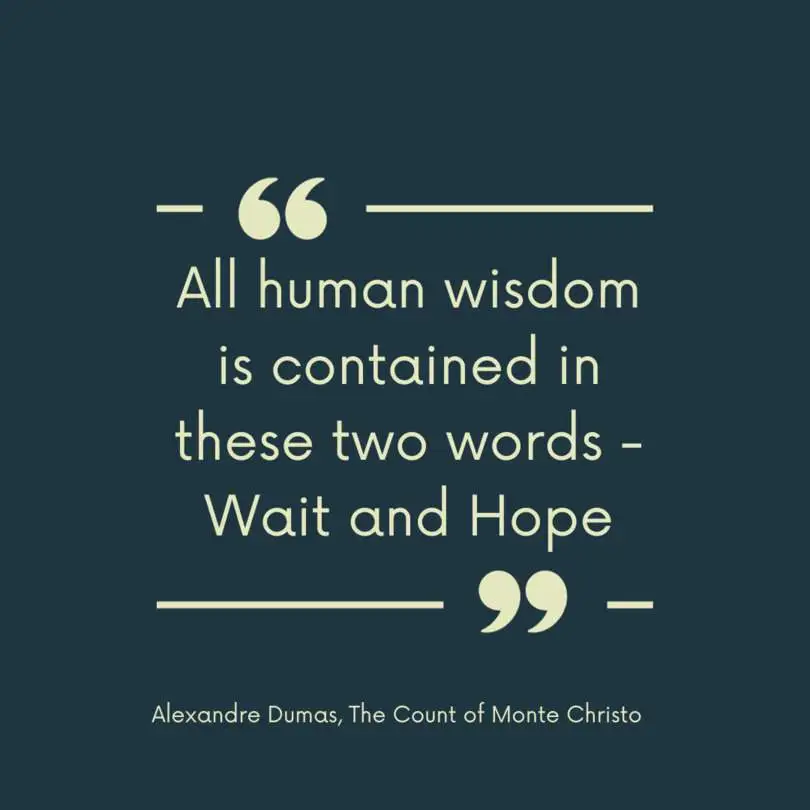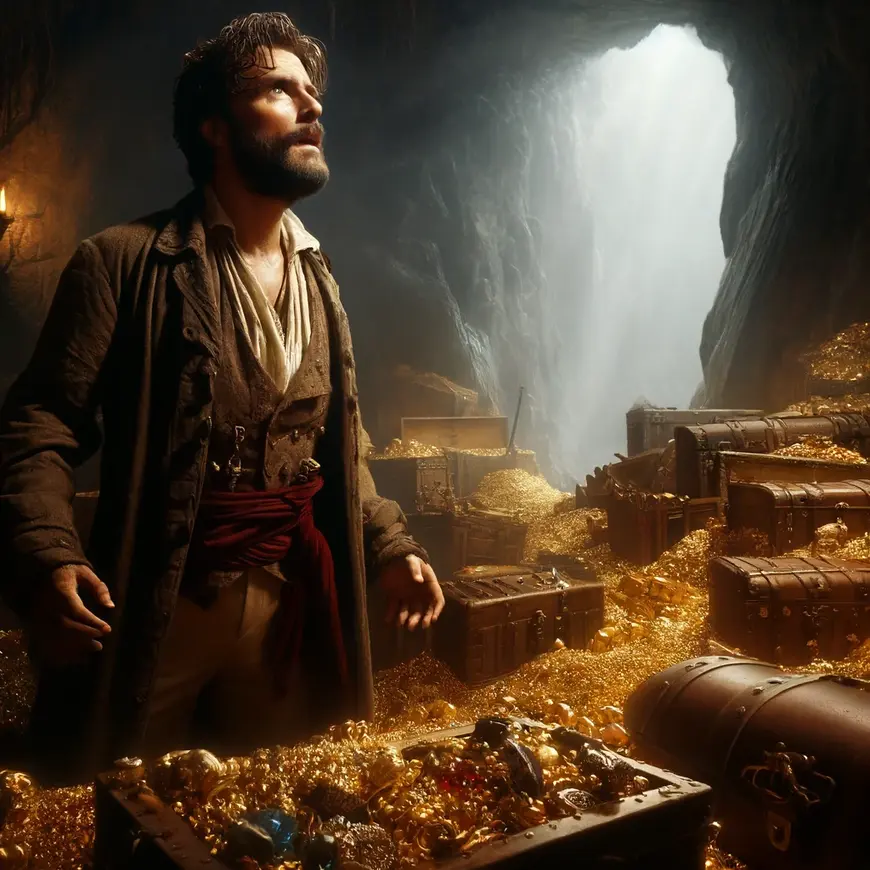The Count of Monte Cristo: A Tale of Revenge, Redemption, and the Triumph of the Human Spirit
Prepare to be swept away on an epic adventure as Alexandre Dumas unfolds the timeless narrative of “The Count of Monte Cristo.” This classic tale, a tapestry of betrayal, revenge, and redemption, beckons readers into a world of passion, intrigue, and the indomitable human spirit. Join Dantès, the protagonist, on a journey that transcends the boundaries of time, offering a saga that remains as captivating today as it was when first penned.
The Tapestry Unfurls: A Masterful Blend of Adventure and Intrigue
“The Count of Monte Cristo” begins with young and optimistic sailor Edmond Dantès on the verge of a bright future. However, fate intervenes. Dantès becomes trapped in a web of betrayal, false accusations, and wrongful imprisonment. The story, like an intricate tapestry, spans decades, continents, and the depths of the human soul.
Dumas, a literary master, skillfully blends adventure and intrigue. He creates a narrative that is both vast in scope and deeply intimate in exploring the human experience. From the sunlit shores of Marseille to the dark dungeons of the Château d’If, readers embark on a journey. The story unfolds with the precision of a well-choreographed dance.

The Protagonist’s Odyssey: Edmond Dantès and the Triumph of Resilience
At the heart of this tale is Edmond Dantès, a man wronged and cast into despair. Dumas brings Dantès to life, giving him complexity that evolves throughout the story. From a naïve sailor to the vengeful Count of Monte Cristo, Dantès’ journey shows the resilience of the human spirit.
As readers see Dantès’ transformation, they are drawn into his character’s intricacies. They witness his internal conflicts, his unwavering determination for justice, and the haunting shadows of his past. Dumas portrays Dantès not as a flawless hero but as a multifaceted individual shaped by adversity. This complexity makes Dantès a timeless and relatable protagonist.
Betrayal and Imprisonment: “The Count of Monte Cristo”
The theme of betrayal drives the narrative forward. Betrayal pushes Dantès into despair and ignites his desire for revenge. The betrayals he faces, both unwitting and intentional, transform him into the Count of Monte Cristo. The story explores the consequences of actions, showing how betrayal affects everyone involved.
Imprisonment in the Château d’If strengthens Dantès’ resolve. The dark dungeon and heavy chains symbolize his emotional and psychological burdens. In prison, Dantès sharpens his intellect, seeks knowledge, and builds his determination. He prepares to take revenge on those who conspired against him.
The Tapestry of Revenge: A Delicate Dance of Retribution
As the Count of Monte Cristo, Dantès orchestrates a complex and meticulous plan of revenge. The narrative unfolds as a delicate dance, with Dantès manipulating the threads of fate to ensnare those who wronged him. The Count’s vengeance is not a blunt instrument but a nuanced symphony, where each note is carefully composed to achieve poetic justice.
Dumas, in his narrative brilliance, navigates the moral ambiguity of revenge. The readers are both spectators and accomplices to the Count’s schemes, prompting introspection on the nature of justice, morality, and the human capacity for forgiveness. The revenge, while cathartic, becomes a double-edged sword that cuts through the lives of the guilty and challenges the moral fabric of the narrative.
Monte Cristo’s Allies and Adversaries: A Gallery of Compelling Characters
Within “The Count of Monte Cristo,” many characters intersect with the Count’s destiny. From the loyal Haydée to the conflicted Villefort, each character adds to the rich story. Dumas skillfully creates characters with depth, motivations, and flaws. They become vivid entities that bring the story to life.
The Count’s allies, like the resourceful Bertuccio and the loyal Maximilian Morrel, add camaraderie and complexity. On the other hand, his enemies, from the cold Fernand to the duplicitous Danglars, show the darker sides of human nature. Through these characters, Dumas explores themes of love, betrayal, and the consequences of actions.
Love and Redemption: Threads of Light Amidst Darkness in “The Count of Monte Cristo”
Amidst the shadows of vengeance, Dumas weaves threads of love and redemption, introducing elements of light that pierce through the narrative’s darkness. The Count’s relationship with Haydée, born out of shared suffering and a quest for justice, adds a poignant layer of emotional depth. Their connection becomes a beacon of hope and a reminder that even in the pursuit of revenge, there exists the potential for redemption and renewal.
The theme of redemption extends to other characters as well, most notably through the narrative arc of Gérard de Villefort. The complexities of Villefort’s character, entangled in a web of moral compromise and self-deception, offer a narrative exploration of the human capacity for change and transformation.
The Lure of Intrigue: Monte Cristo’s Wealth and Influence
Monte Cristo’s vast wealth, acquired through his provident manipulation of financial markets and hidden treasures, serves as both a means and an end in his quest for retribution. The opulence surrounding the Count becomes a metaphor for the allure of intrigue, as he navigates the salons of Parisian high society with a mysterious charisma.
The Count’s wealth becomes a tool for manipulation and a symbol of his newfound power. Yet, beneath the glittering façade lies the somber reality of the emotional toll exacted by his pursuit of vengeance. Dumas skillfully explores the juxtaposition of material wealth and emotional richness, prompting readers to contemplate the true cost of the Count’s fortunes.

The Count’s Trials: A Test of Moral Fiber
As the narrative unfolds, the Count is confronted with moments of moral reckoning that test the very essence of his character. The complexities of revenge, justice, and forgiveness are laid bare, challenging the Count to confront the consequences of his actions. Dumas, through these trials, prompts readers to reflect on the nature of morality and the weight of one’s choices.
The Count’s internal struggles add layers of depth to his character, humanizing him despite the grandiosity of his schemes. Dumas invites readers to witness the evolution of the Count not only as a harbinger of revenge but as a nuanced individual grappling with the moral implications of his quest.
The Tapestry’s Climax: Confrontations and Revelations
As the threads of the narrative draw tighter, the tapestry of “The Count of Monte Cristo” reaches its climax in a series of confrontations and revelations. The intricate plotting, the alliances forged, and the secrets unveiled culminate in moments of high drama that leave readers on the edge of their seats.
Dumas skillfully navigates the tension between anticipation and revelation, delivering a series of narrative crescendos that propel the story toward its ultimate resolution. The climactic moments serve as a testament to Dumas’ storytelling prowess, leaving an indelible mark on the reader’s psyche.
Notable Quotes from “The Count of Monte Christo” by Alexandre Dumas
- “All human wisdom is contained in these two words – ‘Wait and hope.'”
- Explanation: This quote is from the closing lines of the novel and encapsulates one of its central themes: the power of patience and hope. Throughout the story, Edmond Dantès endures immense suffering and meticulously plans his revenge, but ultimately, he learns the importance of patience and the enduring strength found in hope.
- “I am not proud, but I am happy; and happiness blinds, I think, more than pride.”
- Explanation: This quote reflects the complex emotions of Edmond Dantès as he navigates his transformation from a naive sailor to the sophisticated and wealthy Count of Monte Cristo. It suggests that happiness can sometimes cloud one’s judgment even more than pride, indicating the dual-edged nature of his newfound fortune and influence.
- “The difference between treason and patriotism is only a matter of dates.”
- Explanation: This quote highlights the novel’s exploration of moral ambiguity and the fluid nature of right and wrong. It suggests that actions deemed traitorous at one point in history may later be viewed as patriotic.
- “How did I escape? With difficulty. How did I plan this moment? With pleasure.”
- Explanation: This quote captures the determination and resourcefulness of Edmond Dantès as he plots his escape from the Château d’If. It reflects his intense drive to overcome obstacles and exact revenge on those who wronged him.
Trivia Facts about “The Count of Monte Christo” by Alexandre Dumas
- Serial Publication: “The Count of Monte Cristo” was originally published in serial form in the French newspaper “Journal des Débats” from 1844 to 1846. This method of publication helped to build suspense and maintain reader interest over time.
- Historical Setting: The novel is set during the tumultuous period of the Bourbon Restoration in France, following the fall of Napoleon Bonaparte. This historical backdrop adds depth and realism to the narrative, reflecting the political and social upheavals of the time.
- Multiple Adaptations: “The Count of Monte Cristo” has been adapted into numerous films, television series, and even operas. Its enduring popularity is a testament to the story’s timeless themes of justice and redemption.
- Epic Length: The novel is known for its considerable length. Depending on the edition and translation, it can span over 1,000 pages. Despite its length, the intricate plot and compelling characters have captivated readers for generations.
Conclusion “The Count of Monte Cristo” : A Timeless Tale of Human Resilience and Complexity
“The Count of Monte Cristo” endures because of its timeless appeal. Alexandre Dumas creates a tale that explores human resilience, moral complexities, and the triumph of the human spirit over adversity.
Through Edmond Dantès’s journey, readers encounter themes of betrayal, revenge, redemption, and love. Dumas’ rich characters become timeless archetypes. They continue to captivate and engage audiences across generations.
As the Count of Monte Cristo faces his destiny, readers feel the intricate dance between light and shadow, revenge and redemption. Dumas, with his masterpiece, invites readers to reflect on enduring themes of the human experience. This makes “The Count of Monte Cristo” not just a novel but a timeless exploration of the human condition.
More Reviews of Works by Alexandre Dumas
“The Three Musketeers” by Alexandre Dumas: A Swashbuckling Adventure of Honor, Friendship, and Intrigue My Thoughts on The Three Musketeers…
